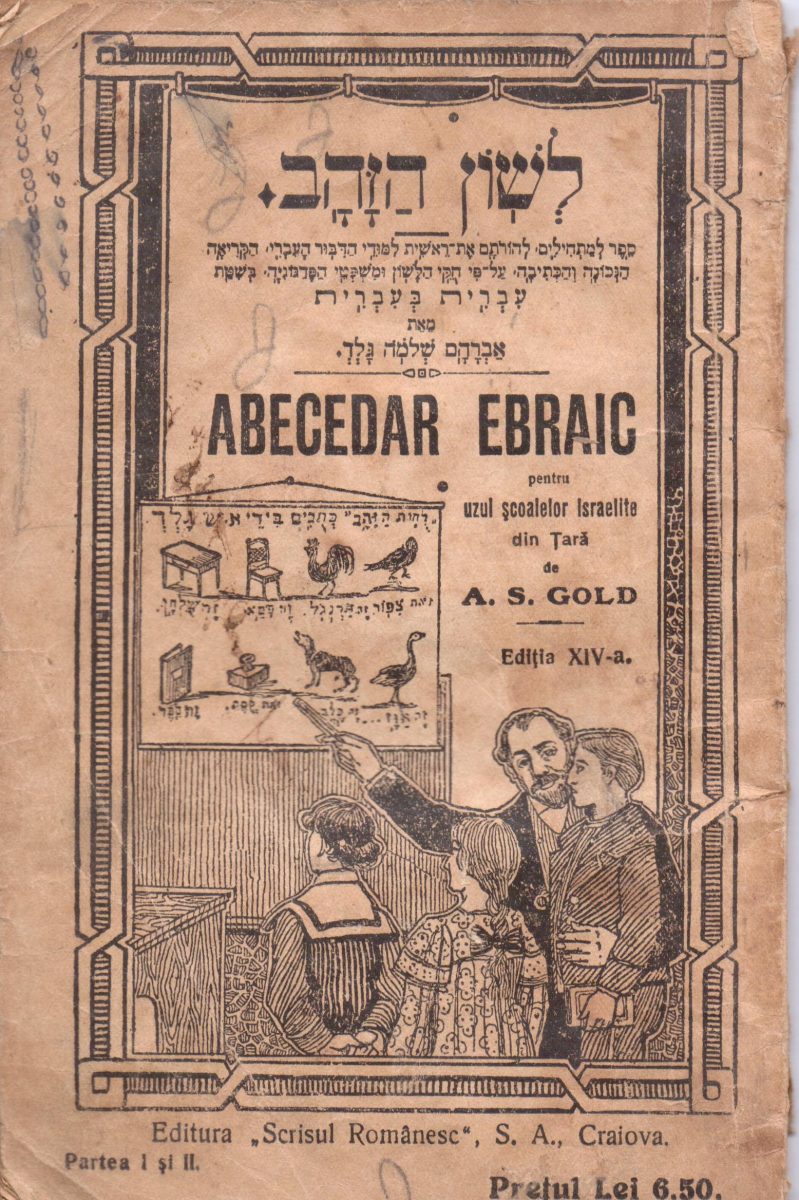
When they settled in the Romanian principalities, the Jews who came from the Ukraine and Galicia attempted to recreate the traditional life of their countries of origin, especially in regards to the community organization and the educational frameworks. Thus, Jewish education until the middle of the 19th century included the traditional educational frameworks, boys attended the Chederor talmud Torah, andYeshivas, which were free, funded by the community or wealthy Jews, with needy pupils often provided with necessary clothing and textbooks.
In the middle of the 19th century, with the modernization and liberalization of Romanian society, Jews began to integrate into the economy and culture. The greater involvement of the Jews, led to greater antisemitism, not only among the inhabitants of cities andvillages but also among the intellectual elite, and was also reflected in the education system, especially in the 1880's and 1890's.
With the expansion of the Haskalah (Jewish Enlightenment) movement in the mid-19th century in Romania, educators, intellectuals, and researchers, mainly from Galicia and Bessarabia, laid the foundations for the establishment of modern educational institutions in Romania. Many of them were prominent personalities in the Romanian general culture, among them Iuliu Barash, Beniamin Schwarzfeld and his sons, Moses Gaster and Heinrich (Heiman) Tiktin. These intellectuals, educated in European universities and rabbinical seminaries, helped modernize Jewish education and culture.
Modern Jewish education in Romania developed in stages. The first phase began in the middle of the 19th century when the new Jewish elites recognized the need for modernization and established the first Jewish schools in Bucharest that distanced themselves from the traditional "cheder". Under the influence of Iuliu Barash, the first modern Jewish school opened in Bucharest 1851, and one year later a second school directed by Israel Pick and Naphtali Popper opened in Bucharest.
In the second stage, in 1863-93, there was a slowdown in the development of Jewish schools, mainly due to the acceptance of Jewish pupils into Romanian schools. In the Education Law passed in 1864, there was no distinction made between Romanian and minority groups. The Jewish response to the call to enroll in government schools was so great that in the school year of 1883/84, they constituted about 15% of all students, and in Moldova they reached 50%.
The increasing number of Jews in government schools aroused opposition among various strata of the Romanian population, which led the government to decide to adopt a policy of preference for Romanian pupils and the rejection of Jewish ones. By 1893, the Law of Primary Education limited the number of Jewish children's access to Romanian schools..
According to this law, anyone who was not a Romanian citizen (and the vast majority of Romanian Jews did not hold citizenship) would not benefit from free primary education. A Jewish child was admitted to the school on the basis of availability only and in addition, was required to pay. This law was the beginning of a process designed to restrict and even eliminate Jews from various fields, and served as a catalyst for the establishment of modern Jewish schools. As a result, Jews, who until then had preferred to send their children to government schools, began sending their children to Jewish schools.Thus, it seemed that in Romania the idea of Jewish schools was imposed from the outside. However, the removal of Jewish children from the government education system did not bring them back to traditional Jewish educational frameworks, but rather to the establishment of modern Jewish schools.
The third phase, which began in 1893, included the establishment of a system of modern Jewish schools, which offered up-to-date curriculum. The Law of Primary Education and subsequent changes emphasized the difference between Romanian pupils and teachers and foreigners. As expected, this law led to a drastic reduction in the number of Jewish students in state-run schools, and many were forced to discontinue their studies. Many of the students who left were girls because parents could not afford to send all the children to the few Jewish schools and preferred to send the boys. For example, in a report sent to the Alliance in 1899 by the Jewish community of Fălticeni, of 430 pupils, 330 were girls who were forced to stop their studies.
The Law of Primary Education and the difficulties it created for the Jews led to greater involvement by organizations such as Alliance Israélite Universelle (AIU) and the Jewish Colonization Association (JCA), which contributed to the establishment of a Jewish school system throughout Romania, and the establishment of a network of independent schools indeed restored members to a model of community organization. With the help of these organizations, modern study programs and teaching methods were incorporated, and in addition, at the beginning of the 20th century vocational schools for boys and girls were established in Romania.